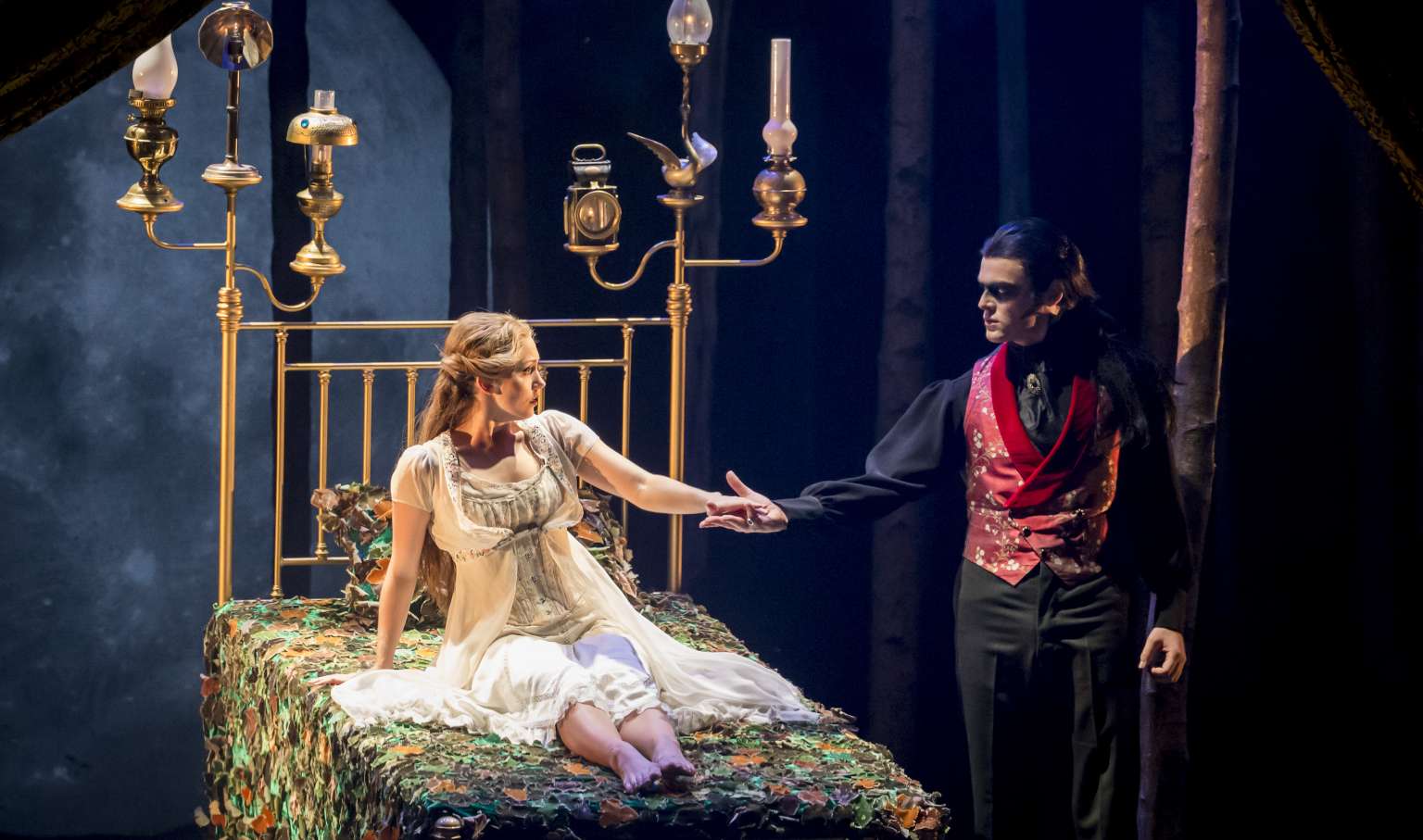SPONSORED CONTENT
Why Matthew Bourne's Sleeping Beauty is a wicked gothic delight
Work some romance and vampires into your National Day weekend and see a fairy tale transform into a gothic, supernatural love story, told through dance and theatre.
Sign up now: Get ST's newsletters delivered to your inbox

PHOTOS: JOHAN PERSSON
Follow topic:
Acclaimed choreographer Sir Matthew Bourne, who brought you the wildly successful, all-male ensemble of Swan Lake, returns with another "exhilarating, entertaining production…clearly destined to become a classic of the genre Bourne has made his own" (The Guardian).
What's different? Everything.
This Sleeping Beauty is nothing like Walt Disney's prettified animated film (1959) or earlier grimier versions of the same tale. Bourne strips the narrative to its requisites-an ageless sleep, true love's kiss and death upon the prick of a finger-and layers it with sumptuous intrigue, unexpected twists and a luscious sense of darkness, evocative of the seven deadly sins.
As you identify with Princess Aurora's struggle between good and evil, indulge your dark side in the excesses and passions of Matthew Bourne's Sleeping Beauty, brought to life through dance and theatre. We give you seven reasons to do so.
Based on a Q&A with choreographer Sir Matthew Bourne
Gluttony: Feast on a buffet of fashion and dance styles over 100 years
The story begins in 1890. Staying true to the late Victorian era, the opening segment of Sir Matthew Bourne's contemporary update feels like a classical ballet, complete with fairy variations inspired by the original ballet by Marius Petipa.
Then, enter the glorious summer of 1911, when Aurora comes of age. In the height of this Edwardian period, waltz is the prominent dance style but new American dance crazes are also introduced. When Aurora is trapped in the land of sleepwalkers, the Prince is led into a free and spirited dance style inspired by Isadora Duncan, American pioneer of modern dance.
We eventually come to the present day, when Aurora is about to be wed. The dancers' movements are confident, sensual and bold, while the atmosphere suggests something cult-like, darker than a fairy-tale wedding.

Greed: Meet two who personify it
The wicked fairy godmother who curses Aurora was actually anonymous in her first appearance in the fairy tale. In later versions, she was named Carabosse, while Disney called her Maleficent in the animated film released in 1959. In Petipa's original ballet with music composed by Tchaikovsky, Carabosse was a frightening figure who entered the scene with dark and dramatic music.
In Bourne's version, Carabosse is an evil fairy, whose wonderfully complex character is revived and her bitterness, greed and evil are succeeded by a new character, her faithful son, Caradoc. Thirsting for revenge, the "bad boy" seduces Aurora, adding yet another twist to the supernatural love triangle.
Wrath: A reason for the curse
"Once upon a time, there lived a King and Queen who could not have a child". This typical beginning to most variants of Sleeping Beauty opened up possibilities for the mystery behind the birth of the royal princess - perhaps the King and Queen went to the dark side to bear a child? For Bourne, this gives compelling reason for both Carabosse's wrath and her wanting to do harm to Aurora. He also casts our beloved Aurora in new light. Who is she? A child from an ordinary family? A wild gypsy child?

Lust: Spot the fascinating symbolism
The prick of the finger and letting of blood are symbolic of a young girl's journey into womanhood. Similarly, true love's kiss and the Prince having to prove his manhood through saving Aurora suggest that the young couple are ready to consummate their love.
Sloth: Evading the responsibility of marriage
In Russian choreographer Petipa's original classical ballet first performed in 1890, Aurora takes a rose from each of her suitors and throws them dismissively onto the floor, as if to say, "I'm not ready for love (or sex)".
If it seems like "coming of age" concepts are modern, think again. Because for this scene, Petipa was inspired by the traditions of the commedia dell'arte (an Italian form of theatre that began in the 16th century), in which a young man presents a rosebud to his lady as a sign of their blossoming love, and if she accepted, it was a declaration of her interest.
Through the evolution of the ballet, the meaning has changed quite a bit as the Rose Adage is all about the ballerina balancing on pointe on one leg, port de bras arms held gracefully above her head. Nothing sloth-like about this pose, we say.
Envy: Once again, vampires save the day
In this version, Aurora is in love with her childhood sweetheart Leo. But their love is cut short by Carabosse's curse. So, how is he still around after she wakes up 100 years later? Here's where you might feel a tinge of envy: our pale-skinned sun-fearing fanged heroes are immortal, so you can guess how our young lovers manage to reunite.
Pride: Give some of it to fairies!
When the original Sleeping Beauty first premiered in 1890, most people would have said yes if you asked them if they believed in fairies. It was quite natural then that fairies were invited into the human world to give their blessings to the Princess. But in present day, few who aren't children believe in these winged creatures.
Bourne's Sleeping Beauty takes us from a time when fairies appeared, to present day when Aurora is to be wed, and fairies are no longer around. For Bourne, they're shut out in their own world, waiting to be believed in again.
Enter the wild and decadent world of Matthew Bourne's Sleeping Beauty. Get tickets >

